Guru vs Confluence
Learn more about your options and pick the best tool for your team.
Not sure if Guru or Confluence is the better fit for your needs? You've come to the right place.
If you are evaluating company wiki and knowledge base software, you may certainly find Guru and Atlassian Confluence on your shortlist. These tools share many similarities, which may make the right choice far from obvious. But they also have several fundamental differences that are important to keep in mind.
In this article, we will take a closer look at both Guru and Confluence and examine their strengths and weaknesses to help you make the right decision for your company.
Guru and Confluence compared
Both Guru and Confluence are designed to help teams organize and share internal knowledge. Confluence has been on the market for almost 20 years and boasts over 60,000 customers worldwide. By comparison, Guru is still a newcomer which positions itself as a more modern alternative to Confluence.
Ultimately, it will all come down to your unique needs, preferences, and workflow, as there is no one-size-fits-all solution when it comes to knowledge base software. And if you're having trouble choosing between Guru and Confluence, keep in mind that they aren't your only options. There are many other excellent tools that may turn out to be an even better fit for your needs.
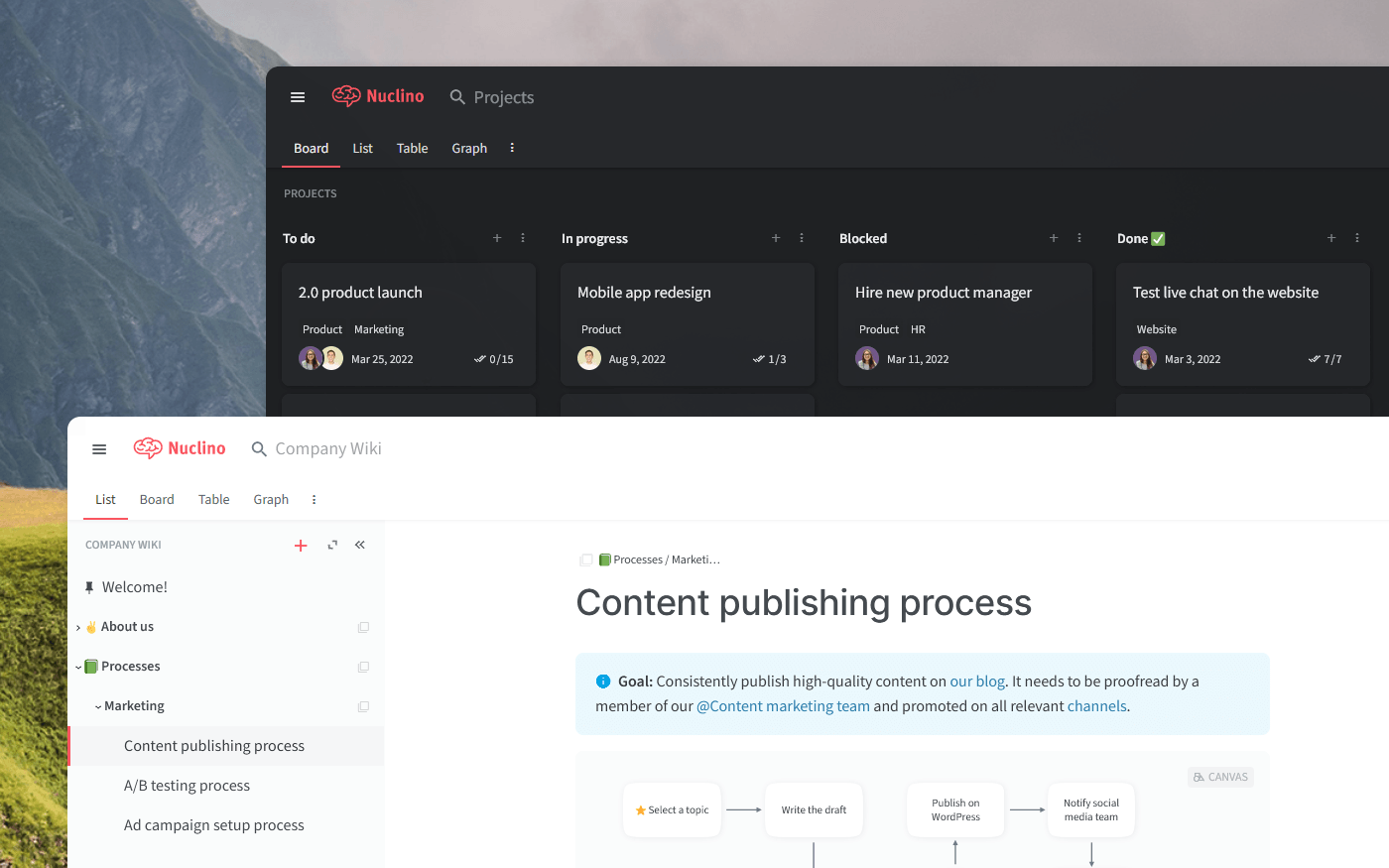
To make the most informed decision, let's first dive deeper into what Confluence and Guru have to offer, taking into account their strengths, limitations, notable features, pricing, and user reviews. We will also have a look at other alternatives you may want to consider.
Guru
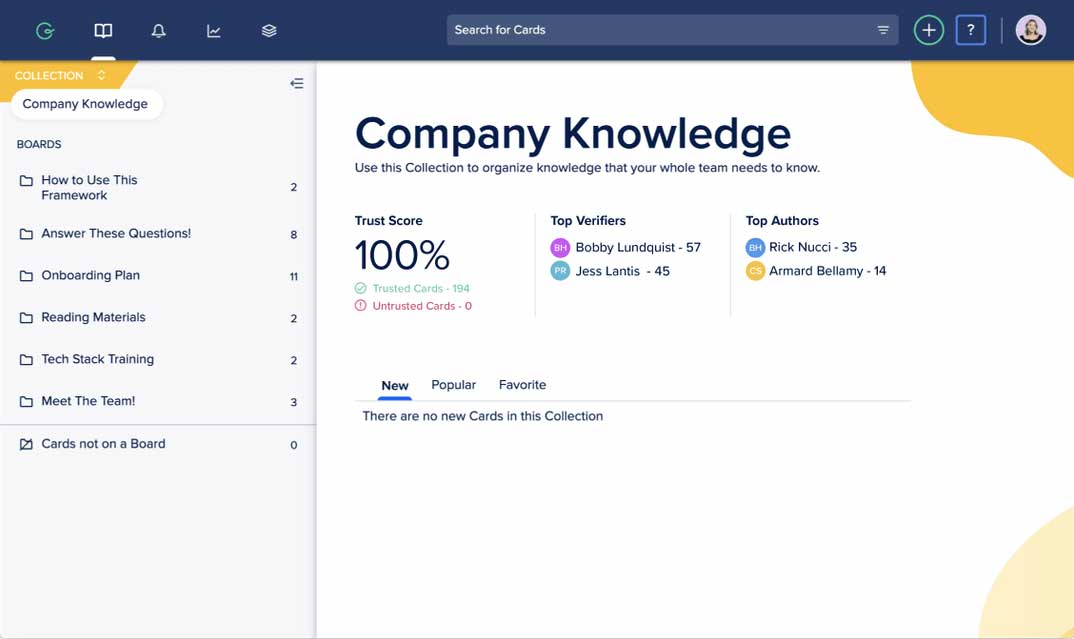
Pricing: Free, advanced features starting from $5/user/month
Rating on Capterra: 4.6/5
Guru is a dedicated KMS with a wide range of highly specialized knowledge management features. It stands out thanks to its browser extension, which allows you to find the knowledge you need, wherever you are. You can create, share, access, and update information right in the context of your existing workflow, without having to switch back and forth between your knowledge base and other tools.
On the other hand, Guru offers limited collaboration features compared to Confluence. It's best suited for building a fairly static knowledge repository with few contributors and many readers.
Why you might prefer Guru over Confluence:
Guru offers built-in verification workflows to ensure your content remains up-to-date.
Guru has a browser extension that allows you to access your knowledge without having to open a new tab.
Guru is more tightly integrated with Slack, allowing you to create, share, and update your knowledge base without leaving the messaging app.
Guru allows you to perform bulk actions and organize multiple pages of your knowledge base at once, while Confluence requires a separate plugin for that.
Looking for more tools similar to Guru? Check out this list of Guru alternatives.
What users say about Guru:
"Guru is more engaging than Confluence. Knowledge alerts allowed us to share information with the rest of the organization and keep the team updated with product announcements and support questions. The setup was a bit labor-intensive but once you put the effort in, it pays off."
"Confluence is a fine software but I would recommend utilizing Guru or something that's more up to date. Confluence is pretty tough to navigate and find what you are looking for. The ease of use is definitely not there."
Confluence

Pricing: Free, advanced features starting from $5.50/user/month
Rating on Capterra: 4.4/5
For many years, Confluence has been considered the gold standard for enterprise wiki software. It's an exceptionally powerful and versatile tool that is best suited for large companies and software development teams.
While Confluence lacks some of the specialized features of Guru, it's a more flexible tool that can be used for a wider range of use cases, including project documentation, collaborative note-taking, technical docs, and more.
Why you might prefer Confluence over Guru:
Confluence seamlessly connects with Jira, BitBucket, and other Atlassian products.
Confluence can be used not only to manage knowledge, but also to collaborate on docs and notes.
Confluence offers a wider selection of third-party integrations and plugins.
Read our detailed review of Confluence to learn more.
Looking for more tools similar to Confluence? Check out this list of Confluence alternatives.
What users say about Confluence:
"Confluence allows my organization to keep its knowledge base completely streamlined. It's easy to collaborate and keep information up-to-date."
"Confluence is the industry standard for technical knowledge management. It has been used extensively by engineering teams for many years as a repository for information on projects and it is obviously built with engineers in mind. There are a ton of features and functionalities, but it could benefit from better UX for non-technical users."
Other alternatives
It should be mentioned that your options are not limited to just Guru and Confluence. Both tools have their strengths, but they also share several weaknesses:
Both Guru and Confluence come with a fairly steep learning curve.
Neither tool treats speed and performance as a top priority.
Guru and Confluence are not designed for seamless real-time collaboration.
If you are looking for a more user-friendly, fast, and collaborative knowledge base solution, consider Nuclino. Lightweight and minimal by design, Nuclino focuses on the essentials, doing away with clunky menus and rarely-used options, and minimizing the learning curve for new users.
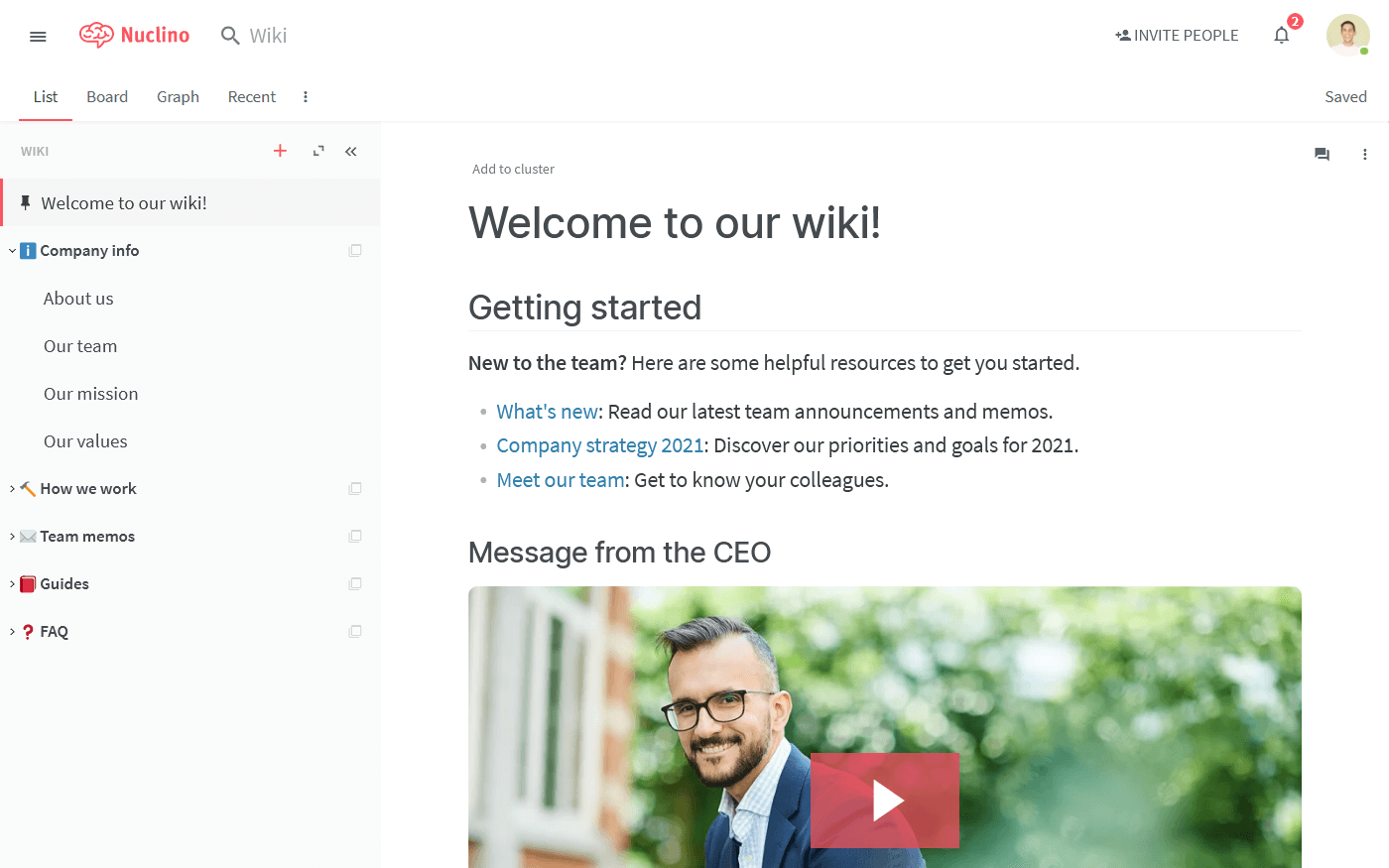
Every document in Nuclino can be collaborated on in real time, with every change automatically preserved in the version history. Comments and mentions can be used to easily exchange feedback.

Nuclino comes with an AI-powered assistant Sidekick. It can instantly answer any question based on your content, brainstorm ideas, create first drafts, generate images, summarize long documents, and more.
Nuclino also offers built-in visual collaboration and allows you to add an infinite collaborative canvas to any page. You can use it to create diagrams and flowcharts, organize ideas using sticky notes, build moodboards, and much more.
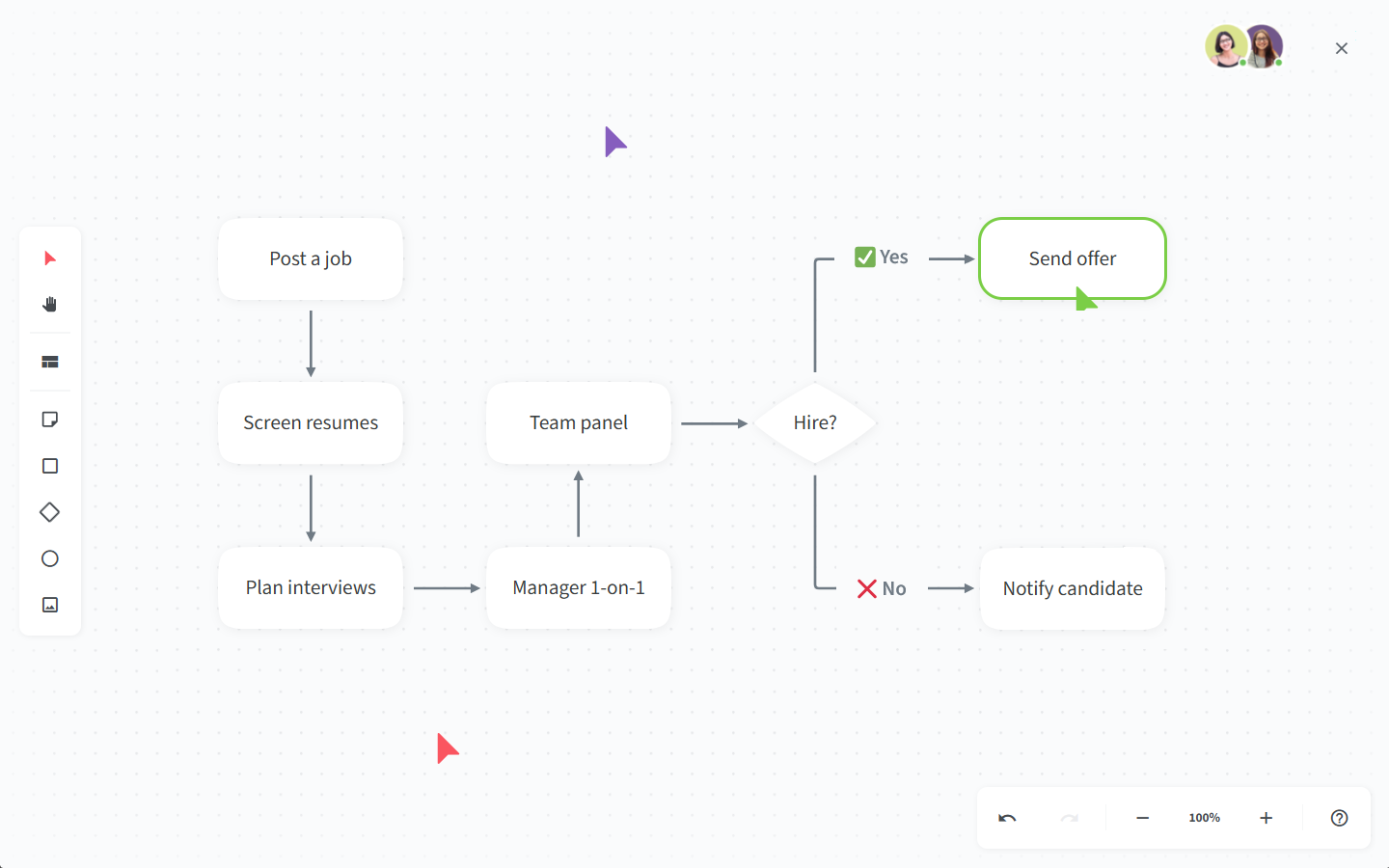
Content in Nuclino can be organized in a variety of ways. Related documents can be linked together by simply typing "@" and the name of the page you'd like to link to. The list, board, table, and graph views can helps you structure your documents visually.

You can also turn any Nuclino workspace into a public website, accessible to anyone on the web and discoverable via search engines. It's perfect for help centers, user documentation, changelogs, and much more.

But Nuclino is more than just a wiki or documentation tool. It's a unified workspace that works like a collective brain, allowing you to bring all your knowledge, docs, and projects together in one place. It's versatile enough to be used to manage projects, plan sprints, onboard new employees, take meeting minutes, and more.
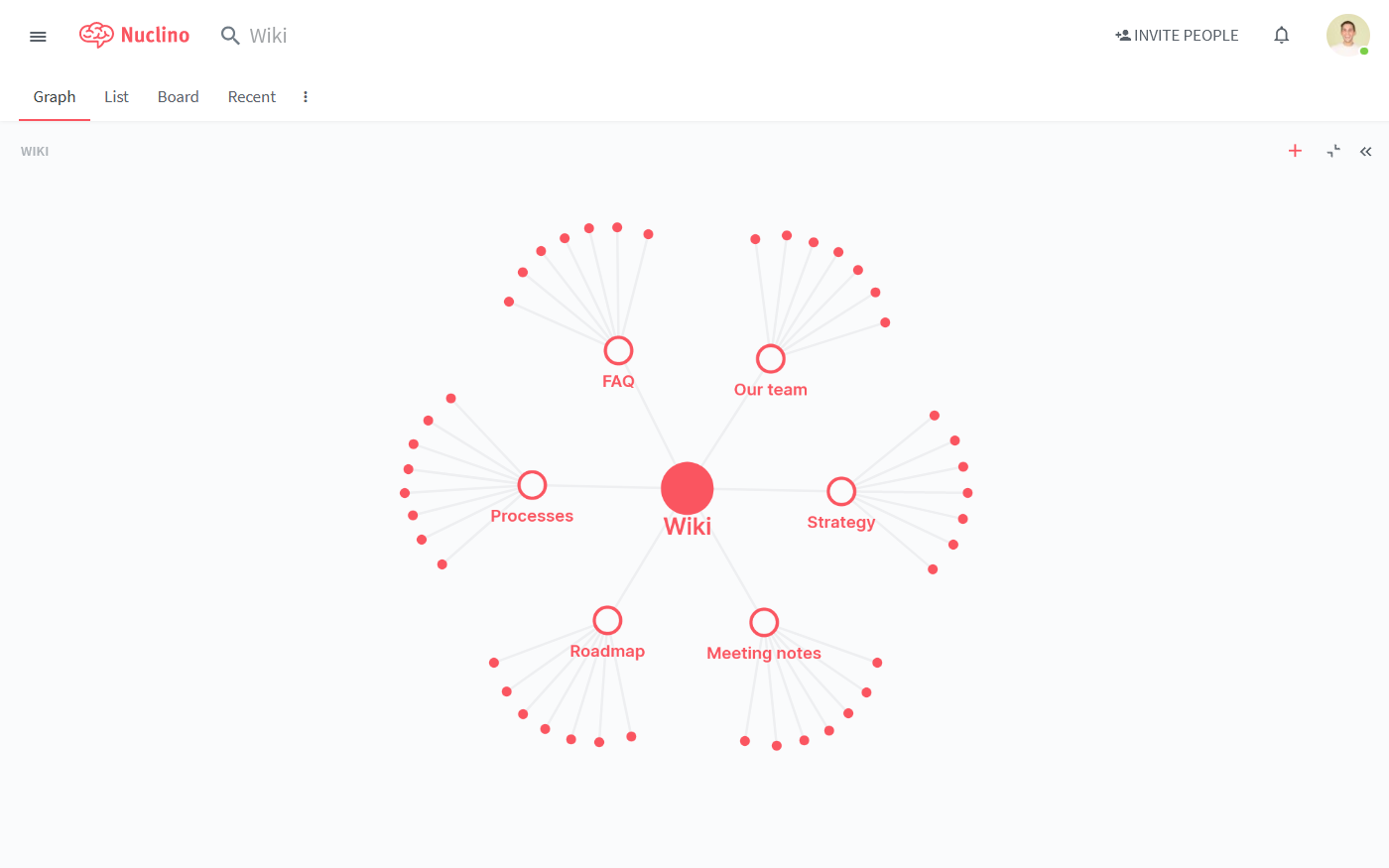
Learn more about how Nuclino compares to Confluence: Nuclino vs Confluence.
Guru vs Confluence: So which is better?
There is no definitive winner when you compare Guru and Confluence. If your team already uses other Atlassian products, such as Jira or BitBucket, then Confluence may be a good fit for you. If you like the idea of a highly specialized KMS with built-in content verification workflows, Guru may be the way to go.
On the other hand, if you prefer something more modern, collaborative, and easy-to-use, consider exploring other alternatives, such as Nuclino.
Ultimately, the best choice depends solely on your team's specific requirements and preferences. We hope this article has made your decision a little easier.
Ready to get started?
